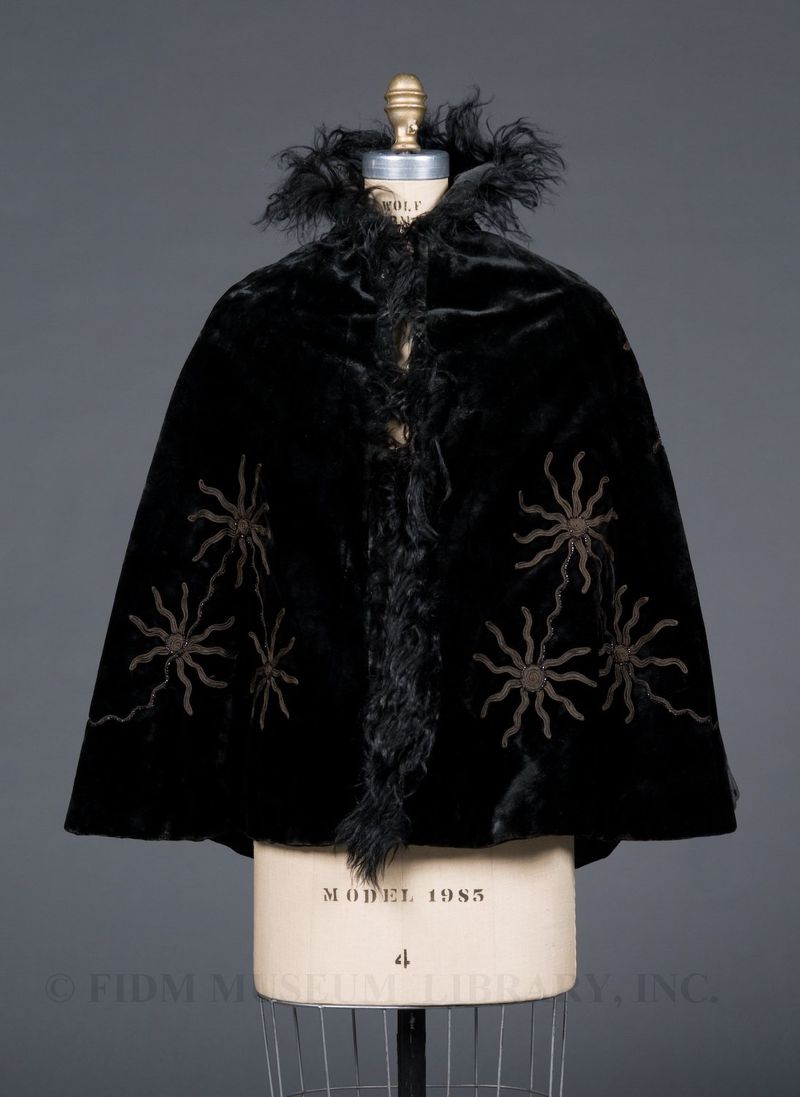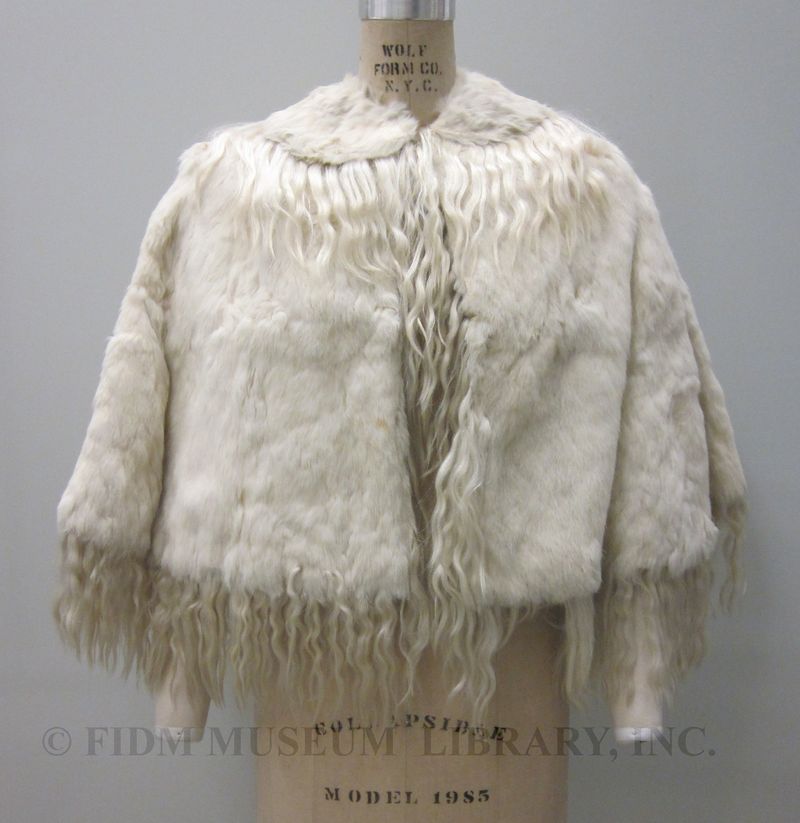Fashion is getting its goat on this fall, as curly wisps of goat hair sprout from Gucci shoes, Fendi and Simone Rocha bags, and coats by Donna Karan, Marni, and Milly. Since ancient times, goat hair has been an important fiber; it is an essential component of mohair and cashmere, among other textiles. And it is so fine-textured that historically it has been used to make wigs and hair extensions. However, from the 1860s, designers also exploited its decorative qualities, using it as a trimming for gowns, capes, and parasols.
 Cape
Cape
The Salt's Company, Bridgeport, Connecticut
c. 1900
Gift of Ellie Johnson
2007.921
This cape of black silk velvet in the FIDM Museum Study Collection is trimmed with a border of goat hair, whose waves are echoed in the embroidered motifs. In December 1895, Vogue advised that "black fox or Thibet goat is a capital trimming" for a cloak. Although often mistaken for the hair of the Tibetan or cashmere goat, the curly hair most prized by couturiers actually belonged to the Angora goat.
 Cape
Cape
c. 1900
Gift of Judy Thomsen
2004.823
This short cape of cream-colored rabbit fur from the FIDM Museum's Permanent Collection is fully trimmed with a long fringe of matching goat hair. On November 26, 1892, the magazine The Illustrated American noted a fashion for white evening mantles with "white Thibet goat trimming." The following year, The Bazaar Exchange and Mart, and Journal of the Household published a pattern for an opera cloak, recommending: "As regards trimming, the prettiest would be white Siberian goat if the colour of the cloak be light."
While natural white and black were the most popular colors, white goat hair could be dyed to achieve a variety of brilliant hues. The silky substance could then be arranged into fringe, flounces, and tassels, taking the humble goat from farm to fashion.

